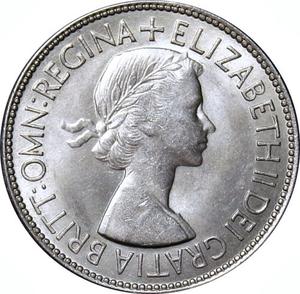
The cross was used on Medieval English coins to assist in reading the (somewhat cryptic at the time) legends by showing where the legend starts. Later, some other symbols were also used in its place serving also the role of mint marks.
The rest of the legend ("FID DEF" for "FIDEI DEFENSATRIX", Defender of the Faith) is on the reverse of the coin.
The "BRITT OMN" part is sometimes translated as "of all the Britons" (people), similar to how earlier monarchs were styled kings "of the English"; however, this can only be said of a title like "BRIT REX" - King of the British - which implies "all the British".
In 1868, a book by C. W. Dilke popularised the phrase "Greater Britain" to mean Britain and all its colonies. This may have led to the proposal of the title "King of all Britains", in the last years of the 19th century, by the Earl of Rosebery. The Oxford English Dictionary provides two quotes:
1897 Earl of Rosebery in Daily News 5 July 4/5 : "`Regina Britanniarum' - the Queen of the Britains... She is sovereign, not of one or two, but of numberless Britains, all self-supporting."
1901 Westminster Gazette 11 Dec. 2/2: "Lord Rosebery has succeeded with his cry of "All the Britains", as the three letters "Omn" on the new coins are to testify... Our King henceforth is to be King of All the Britains."
This style may have been influenced by the Russian style of "Czar of all the Russias". It appeared on coins abbreviated as Britt. Omn.: the double T in Britt is a mark of plural, a common abbreviation on Roman coins.
This legend was only used by the Queen in 1953 and was then discontinued due to anti-colonial sentiment - the "all the Britains" part as a reference to the colonies of the British Empire did not sound good at a time of increasing decolonisation. | 


